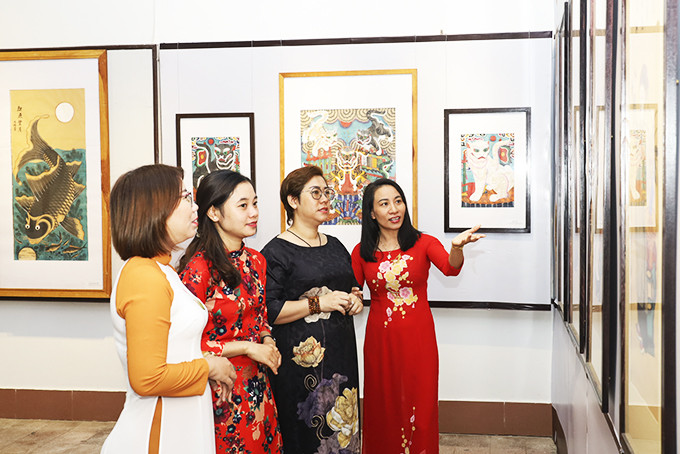
In the 2021 Lunar New Year (Tet) holidays, people in Nha Trang City can visit Khanh Hoa provincial museum (16 Tran Phu Street, Nha Trang City) to contemplate the exhibited Vietnamese folk paintings. This is the first time the exclusive folk paintings of Vietnam Fine Arts Museum have been displayed in Khanh Hoa.
In the 2021 Lunar New Year (Tet) holidays, people in Nha Trang City can visit Khanh Hoa provincial museum (16 Tran Phu Street, Nha Trang City) to contemplate the exhibited Vietnamese folk paintings. This is the first time the exclusive folk paintings of Vietnam Fine Arts Museum have been displayed in Khanh Hoa.
The exhibition of Vietnamese folk paintings is open to visitors free of charge from February 5 to March 31. The exhibition features 70 original paintings of Vietnam’s well-known folk painting genres, such as Dong Ho (Bac Ninh Province), Hang Trong, Kim Hoang (Hanoi); worshipping paintings in Vu Di (Vinh Phuc Province), Doc Loi (Nghe An Province); and paintings of some ethnic minorities in the northern mountainous region. Each genre has its own style of portraying, vibrant natural colors, and skillful drawing techniques bearing the national identity.

|
Dong Ho folk paintings present a rustic beauty on the themes of blessing, wishing, landscape, activities, history, satire, etc. Hang Trong folk paintings revolve around the themes of worshipping, historical stories, and Tet, and so on. Hang Trong folk paintings were named after Hang Trong Communal House, where the local people often make paintings and sell them on Tet occasion. The distinct feature of Kim Hoang paintings is that they are made on red paper, so they are also called red paintings. Kim Hoang paintings are considered as an intermediate genre between Dong Ho paintings and Hang Trong paintings, but the woodcuts of Kim Hoang paintings are more delicate and detailed than the ones of Dong Ho paintings and their colors are brighter than Hang Trong paintings. The ongoing exhibition at Khanh Hoa provincial museum introduces two famous paintings of the Kim Hoang painting genre, which are pig painting and chicken painting.
The exhibition section of worshipping paintings is impressive with many paintings representing the religious, spiritual, and religious values. Some of the paintings have been worshipped at Doc Loi Temple. The paintings can help the visitors to learn more about the worshipping space of Kinh people. Besides, there are religious paintings of Cao Lan ethnic people and Nung ethnic people.
According to Pham Thi Thanh Binh, deputy head of exhibition-propaganda bureau of Khanh Hoa provincial museum, folk paintings (including Tet paintings and worshiping paintings) have appeared for a long time. On the occasion of Tet, many families in Vietnam decorate their houses with folk paintings in order to expel evil spirits and pray for good things. They are the product of collective intelligence through generations, meeting the spiritual and religious needs of people. They also convey the education of morality and personality. Reportedly, at present, not many families are pursuing the profession of making Dong Ho and Hang Trong paintings; Kim Hoang paintings have been being restored. The worshipping paintings of the ethnic groups in the northern mountainous areas are facing the risk of fading into oblivion.
According to the original plan, besides the folk painting exhibition, the museum would hold many other activities such as introducing books, displaying the collection of bonsai and themed decorations that has set a world record, making folk paintings, holding games for children, and so on. However, the complicated development of COVID-19 forced the cancellation of many activities. Khanh Hoa provincial museum decided to keep holding folk painting exhibition and bonsai and themed decorations display but at a smaller scale. The activities are organized in compliance with the prevention measures.
Giang Đinh
Translated by H.N






